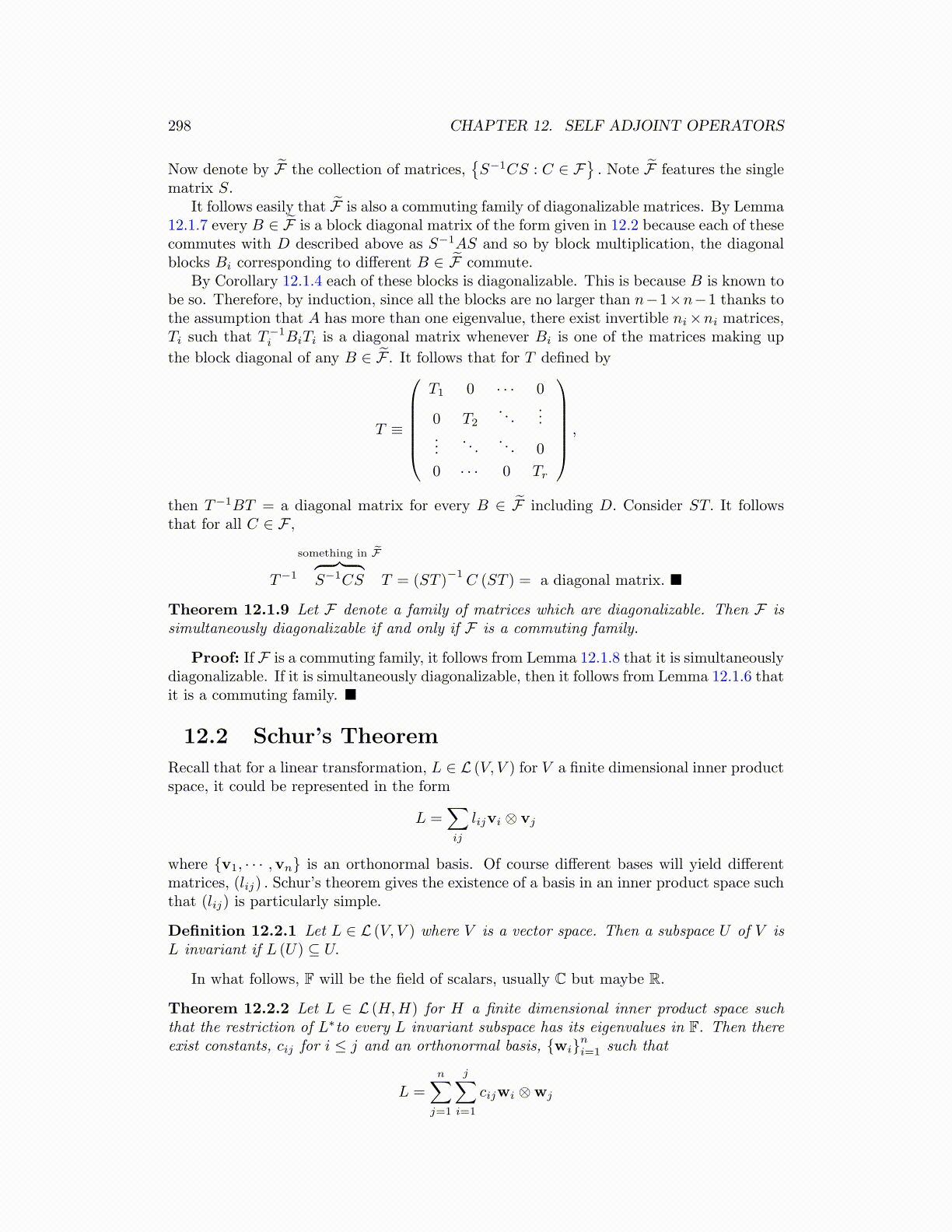
298 CHAPTER 12. SELF ADJOINT OPERATORS
Now denote by F̃ the collection of matrices,{S−1CS : C ∈ F
}. Note F̃ features the single
matrix S.It follows easily that F̃ is also a commuting family of diagonalizable matrices. By Lemma
12.1.7 every B ∈ F̃ is a block diagonal matrix of the form given in 12.2 because each of thesecommutes with D described above as S−1AS and so by block multiplication, the diagonalblocks Bi corresponding to different B ∈ F̃ commute.
By Corollary 12.1.4 each of these blocks is diagonalizable. This is because B is known tobe so. Therefore, by induction, since all the blocks are no larger than n−1×n−1 thanks tothe assumption that A has more than one eigenvalue, there exist invertible ni×ni matrices,Ti such that T−1
i BiTi is a diagonal matrix whenever Bi is one of the matrices making up
the block diagonal of any B ∈ F̃ . It follows that for T defined by
T ≡
T1 0 · · · 0
0 T2. . .
......
. . .. . . 0
0 · · · 0 Tr
,
then T−1BT = a diagonal matrix for every B ∈ F̃ including D. Consider ST. It followsthat for all C ∈ F ,
T−1
something in F̃︷ ︸︸ ︷S−1CS T = (ST )
−1C (ST ) = a diagonal matrix. ■
Theorem 12.1.9 Let F denote a family of matrices which are diagonalizable. Then F issimultaneously diagonalizable if and only if F is a commuting family.
Proof: If F is a commuting family, it follows from Lemma 12.1.8 that it is simultaneouslydiagonalizable. If it is simultaneously diagonalizable, then it follows from Lemma 12.1.6 thatit is a commuting family. ■
12.2 Schur’s Theorem
Recall that for a linear transformation, L ∈ L (V, V ) for V a finite dimensional inner productspace, it could be represented in the form
L =∑ij
lijvi ⊗ vj
where {v1, · · · ,vn} is an orthonormal basis. Of course different bases will yield differentmatrices, (lij) . Schur’s theorem gives the existence of a basis in an inner product space suchthat (lij) is particularly simple.
Definition 12.2.1 Let L ∈ L (V, V ) where V is a vector space. Then a subspace U of V isL invariant if L (U) ⊆ U.
In what follows, F will be the field of scalars, usually C but maybe R.
Theorem 12.2.2 Let L ∈ L (H,H) for H a finite dimensional inner product space suchthat the restriction of L∗to every L invariant subspace has its eigenvalues in F. Then thereexist constants, cij for i ≤ j and an orthonormal basis, {wi}ni=1 such that
L =
n∑j=1
j∑i=1
cijwi ⊗wj